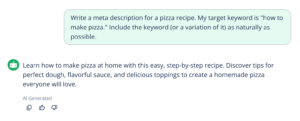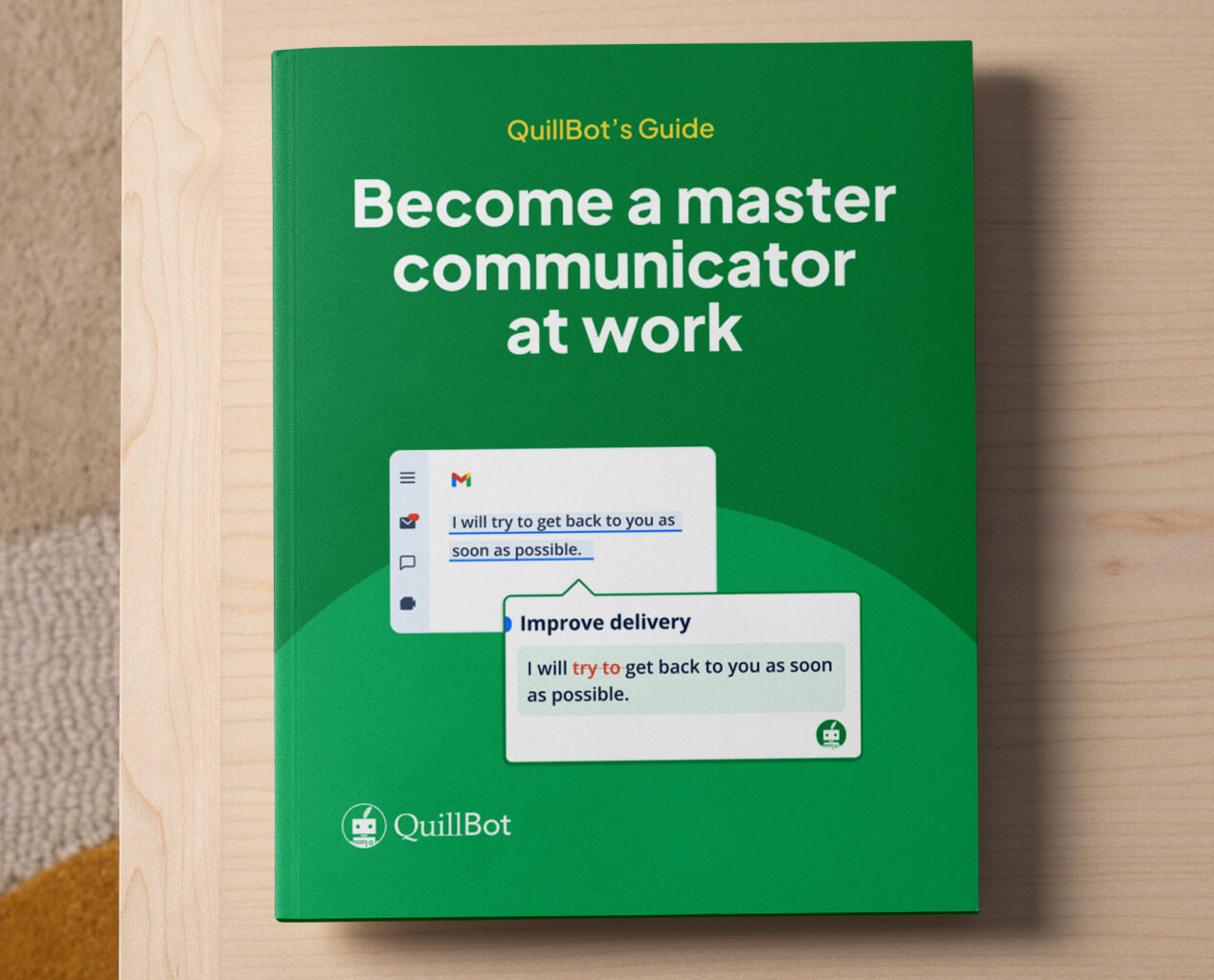Meta Description Generator | How To & Tips
Meta descriptions are an important element in your website’s search engine optimization (SEO). They’re also important for human readers, as meta descriptions are what show up beneath your webpage title in search engine results—and could therefore influence whether a reader clicks on your page or not.

While you can certainly write meta descriptions on your own, QuillBot’s free AI meta description generator can write click-worthy ones in seconds.
What is a meta description?
A meta description is a webpage attribute that provides a brief summary of the page’s content. It appears in thetag of the webpage’s HTML. A meta description informs human users and search engines what the page is about.
“An acronym is a word that is an abbreviation for a phrase formed from letters in that phrase, typically the initial letters of each word.”
This meta description defines “acronym” as succinctly as possible and lets both readers and search engines anticipate what the article is about.
How to write a meta description
There are a few steps and some best practices you should follow when writing a meta description.
1. Summarize the page
Summarize the content of your webpage clearly and concisely. A good meta description gives the reader an immediate idea of what they can expect to find if they click on the page. By doing this, the description also lets search engines “understand” the content of the page.
Follow these best practices when summarizing your page:
- Describe what the page is about in 1–2 short sentences.
- Avoid vague language; be specific and relevant to the page content.
- Aim for 130–160 characters (including spaces).
- Write a unique description for each page.
- Don’t include any formatting (e.g., bold, italics, underline), as it’s ignored in meta descriptions.
2. Include your target keyword
Keywords help readers (and search engines) find content related to specific topics. For example, if you search for “how to make pizza,” you would expect to find recipes for pizza. Before writing your meta description, you should have a target keyword in mind.
When writing a meta description, include the keyword naturally. “Keyword stuffing” is the practice of using keywords excessively to manipulate search results; both human readers and search engines can detect this practice. Some search engines will penalize keyword stuffing by not featuring the page high up in the results.
Some search engines, like Google, will bold keyword matches in your meta descriptions. These can be exact, partial, or synonym matches, as seen in the examples below.
- Make delicious pizza at home with this homemade pizza recipe, including a dough recipe, topping ideas, and step-by-step instructions with photos and videos.
- Learn how to make pizza with this classic, easy recipe. Prepare your homemade dough, make your own sauce, and top it off with your favorite ingredients.
- This homemade pizza dough recipe is perfect for beginners and experts alike. It yields 2 chewy, crispy crusts. Skip delivery because you only need 6 ingredients.
3. Write for human readers
Meta descriptions may be used for SEO, but they should be written primarily with human readers in mind. When writing your meta description, think about what would make a human want to click on your webpage.
A few more tips for writing for humans are:
- Include a benefit, solution, or unique value.
- If relevant, include a call-to-action (e.g., “find out more”).
- Treat your meta description like ad copy; what will draw the reader in?
Using an AI meta description generator
QuillBot’s AI meta description generator can help you generate meta descriptions in seconds. When prompting the tool, include:
- The type of content (e.g., blog post, recipe, e-commerce page)
- The focus of the content (e.g., pizza recipe, reusable water bottles, adjectives)
- The keyword you want to include (e.g., “how to make pizza”)
A sample prompt that you can adapt for your specific situation is:
- Write a meta description for a [content type] about [content focus]. Include the keyword [keyword] (or a variation of it) as naturally as possible.
The meta description it generated uses the keyword naturally, outlines what readers should expect in the article, and stays in the 150–160 character length.
Once the AI meta description generator replies, you can continue chatting with it to refine your description further or generate other ideas. Try telling it:
- Generate five more ideas like this one.
- Make this description longer/shorter.
- Include a call-to-action.
Frequently asked questions about Meta description generator
- How long should a meta description be?
-
A meta description should be 130–160 characters, including spaces. If it is too short, it won’t provide enough context. If it’s too long, it might get truncated by search engines.
A meta description generator, like QuillBot’s AI meta description generator, can help you create meta descriptions of the right length in seconds.
- Which part of HTML contains metadata?
-
The part of HTML that contains metadata is the “head” section. A webpage’s metadata goes between the “<head>” and “</head>” tags.
Some types of metadata that you’ll usually find in this part of HTML are the meta title and the meta description. Meta titles are often the same as the title of your webpage, and meta descriptions are succinct summaries of the page’s content.
You can easily generate meta descriptions using QuillBot’s free AI meta description generator.
Cite this Quillbot article
We encourage the use of reliable sources in all types of writing. You can copy and paste the citation or click the "Cite this article" button to automatically add it to our free Citation Generator.
Santoro, K. (2025, July 24). Meta Description Generator | How To & Tips. Quillbot. Retrieved August 11, 2025, from http://qbot.seotoolbuy.com/blog/ai-writing-tools/how-to-use-a-meta-description-generator/


